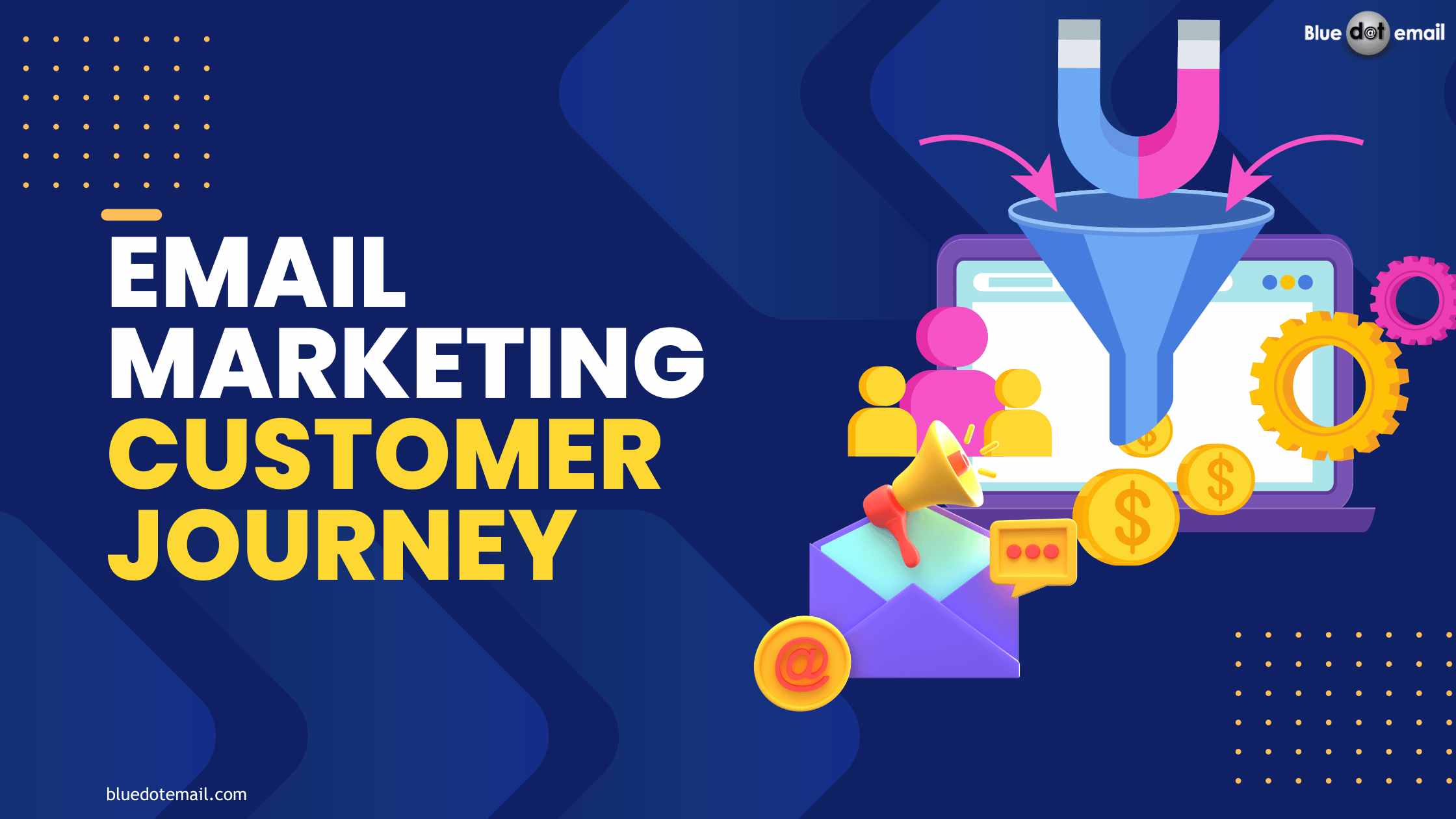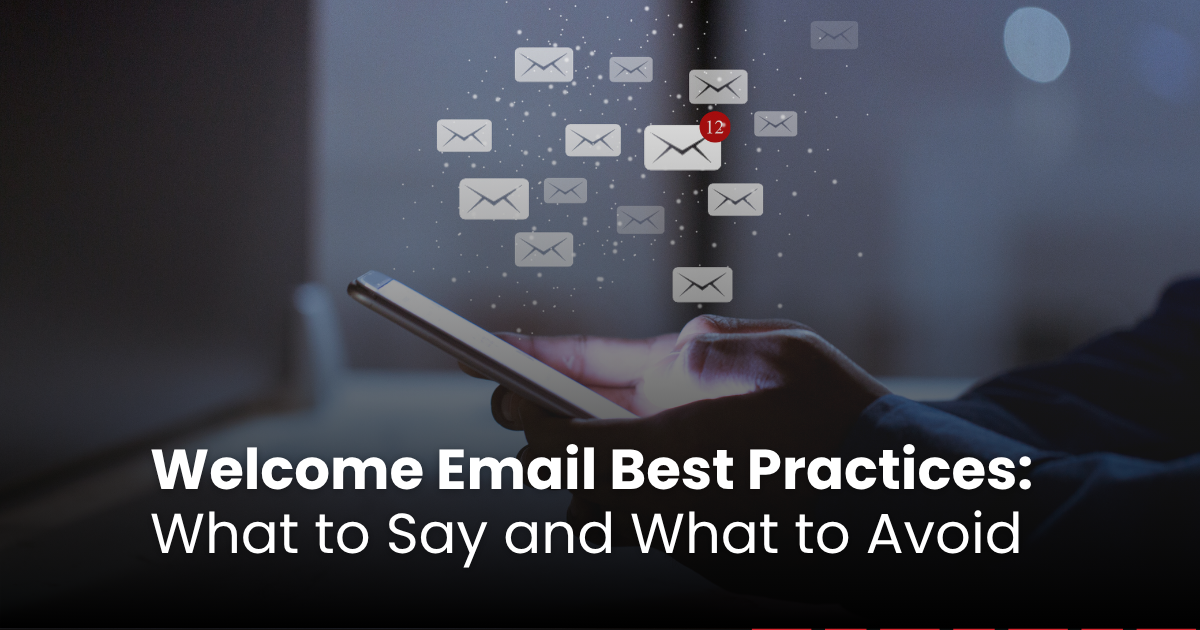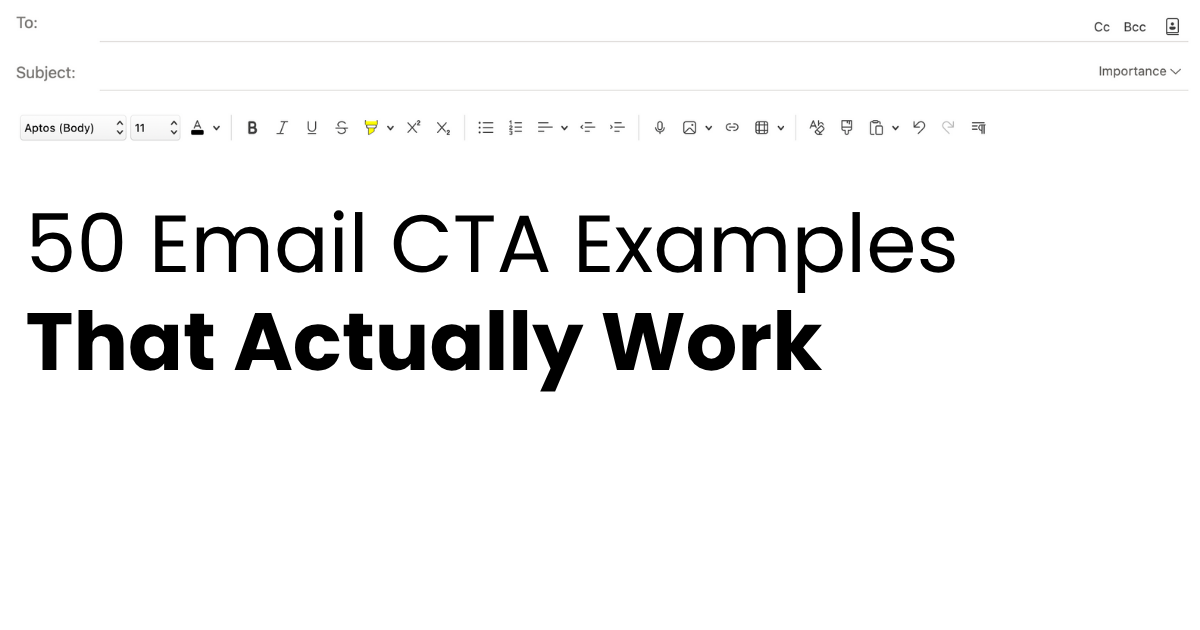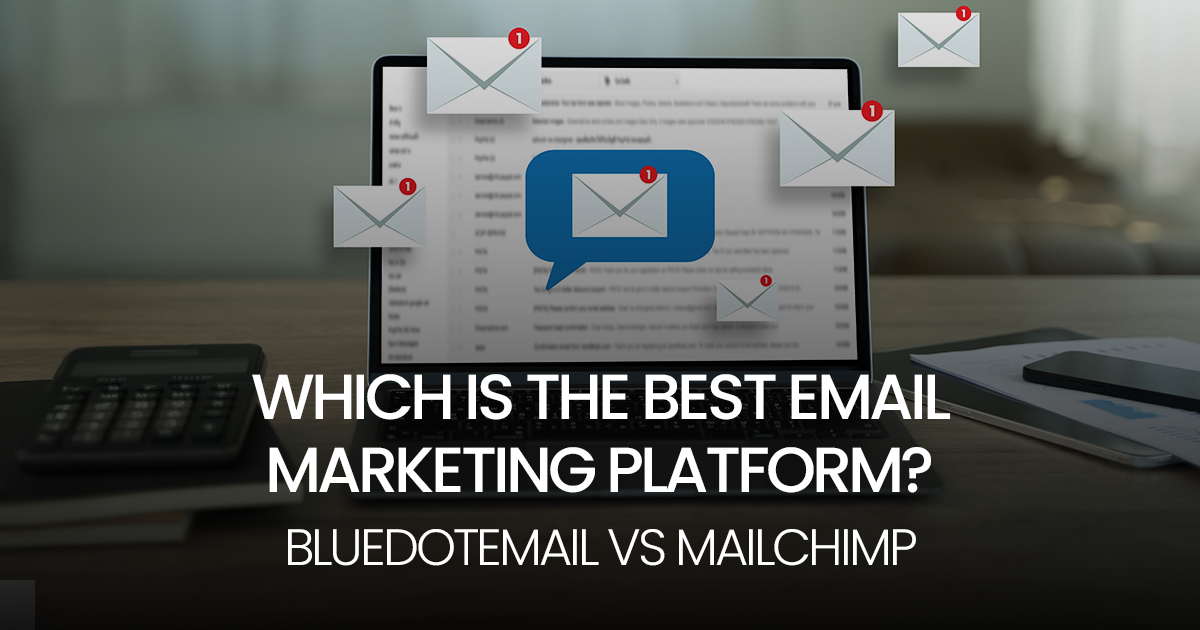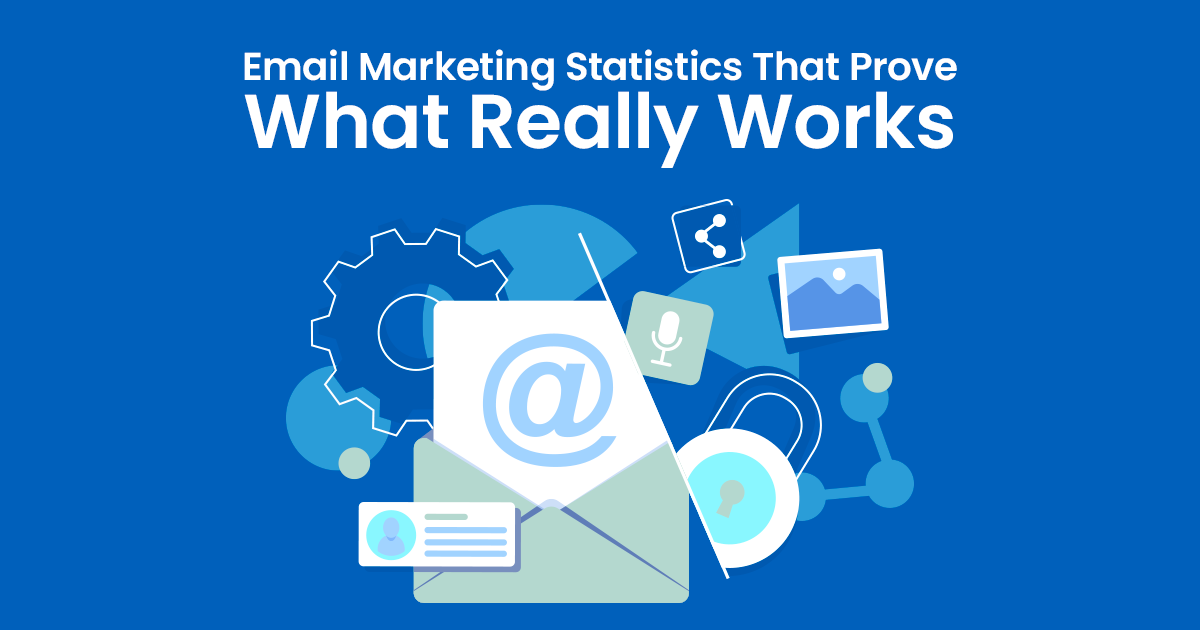In digital marketing, one term that consistently echoes is “customer journey.” But what exactly is a customer journey, and why should it be at the forefront of your email marketing strategy?
Enter the email marketing customer journey. This isn’t some dusty marketing theory – it’s a dynamic, living map revealing the stages your customers traverse as they interact with your brand. By understanding these stages, you can craft targeted email campaigns that resonate with their needs and nudge them gently toward that coveted “click to purchase” button.
What is a Customer Journey?
The email marketing customer journey refers to the path that subscribers take from the moment they sign up for your email list to when they become loyal customers (and hopefully, even brand advocates). It’s all about nurturing leads and building relationships with them through targeted email campaigns that are relevant to their interests and stage in the buying cycle.
Why Email Marketing Customer Journey is Important?
The Email Marketing Customer Journey is crucial because it helps businesses create a personalized and engaging experience for their customers. Here are several reasons why it is important:
- Increased Engagement And Conversions: By tailoring your emails to each stage of the journey, you provide relevant content and offers that resonate with subscribers’ needs and interests. This leads to higher engagement, click-through rates, and ultimately, conversions.
- Enhanced Customer Relationships: The journey allows you to nurture leads, educate them, and build trust by addressing their concerns and offering solutions throughout their decision-making process. This fosters loyalty and increases the likelihood of them becoming repeat customers or brand advocates.
- Improved Campaign Targeting And Segmentation: Segmenting your email list based on journey stages allows you to send highly targeted messages that cater to specific subscriber groups. This increases the relevance of your emails, boosting engagement and effectiveness.
- Streamlined Communication And Automation: Understanding the journey helps you create automated email sequences that deliver the right message at the right time, saving you time and effort while ensuring consistent communication with your audience.
- Data-Driven Optimization: By tracking key metrics across different journey stages, you gain valuable insights into subscriber behavior and identify areas for improvement. This allows you to optimize your email strategy for better results.
Email Marketing Customer Journey Stages
The Email Marketing Customer Journey typically consists of several stages, each representing a different phase of the customer’s interaction with your brand. Here’s a breakdown of the key stages in the Email Marketing Customer Journey:
1. Awareness (Introducing Your Brand):
- Objective: This stage aims to grab attention, introduce your brand and its value proposition, and entice subscribers to learn more.
- Activities:
- Welcome Email: Set the tone for the relationship, express gratitude, and provide basic information about your brand.
- Introductory Content: Offer valuable resources like blog posts, ebooks, or webinars to showcase expertise and address potential customer pain points.
- Lead Magnets: Incentivize sign-ups by offering free guides, templates, or discounts in exchange for email addresses.
- Metrics to Track:
- Open Rates: Gauge initial interest based on how many subscribers open your emails.
- Click-through Rates: See how many people engage with your calls to action and explore your offerings further.
- Sign-up Conversions: Monitor the effectiveness of your lead magnets and signup forms.
2. Consideration (Educating and Nurturing Leads):
- Objective: Now that you’ve gained their attention, educate potential customers about your products/services, highlight their benefits, and position yourself as the solution to their problems.
- Activities:
- Educational Content: Share blog posts, infographics, or videos that address common queries and demonstrate your expertise.
- Product Demos: Showcase your offerings in action through product demos, explainer videos, or webinars.
- Comparison Guides: Help potential customers understand how your products/services compare to competitors.
- Metrics to Track:
- Click-through Rates: Track engagement with your educational content to gauge their interest in your solutions.
- Content Engagement: See how long subscribers interact with your content and explore deeper resources.
- Website Traffic: Monitor how many potential customers visit your website from your emails.
3. Decision (Encouraging Purchases):
- Objective: This stage motivates customers to make a purchase decision by showcasing value, addressing concerns, and offering compelling incentives.
- Activities:
- Targeted Promotional Offers: Personalize discounts, special deals, or bundles based on subscriber preferences and behavior.
- Limited-time Discounts: Create urgency and encourage immediate action with limited-time offers and flash sales.
- Case Studies and Testimonials: Showcase real-world customer success stories and build trust in your offerings.
- Metrics to Track:
- Conversion Rates: Measure the percentage of subscribers who make a purchase after receiving your email.
- Average Order Value: See how much each customer spends on average to analyze purchasing behavior.
- Abandoned Cart Emails: Recover lost sales by reminding subscribers about items left in their shopping carts.
4. Retention (Building Loyalty and Repeat Purchases):
- Objective: Don’t lose sight of existing customers! This stage focuses on nurturing relationships, building loyalty, and encouraging repeat purchases.
- Activities:
- Personalized Recommendations: Suggest products/services based on past purchases and browsing behavior.
- Exclusive Offers: Reward loyal customers with exclusive discounts, early access to new products, or loyalty programs.
- Customer Appreciation Emails: Thank customers for their business and show them they’re valued.
- Metrics to Track:
- Repeat Purchase Rates: Track how many customers buy from you again after their initial purchase.
- Customer Lifetime Value: Calculate the average revenue generated from each customer over time.
- Churn Rate: Monitor the percentage of customers who unsubscribe or stop engaging with your brand.
5. Advocacy (Turning Customers into Brand Champions):
- Objective: The highest level of engagement! This stage aims to transform satisfied customers into loyal brand advocates who recommend you to others.
- Activities:
- Referral Programs: Incentivize customers to refer their friends and family with rewards or discounts.
- Loyalty Programs: Offer tiered rewards and benefits for continued engagement and purchases.
- Exclusive Content for Advocates: Share valuable insights, early access, or behind-the-scenes content with loyal customers.
- Metrics to Track:
- Referral Conversions: Track how many new customers come from your referral program.
- Social Media Mentions: Monitor how often customers mention your brand on social media.
- Brand Reviews: Check how many positive reviews your brand receives online.
Remember: This is a continuous journey, not a linear process. Customers may move back and forth between stages depending on their needs and behavior.
By understanding each stage and tailoring your email marketing strategy accordingly, you can build meaningful relationships with your audience, nurture leads, drive conversions, and cultivate loyal brand advocates – the secret sauce of sustainable business success.
Using Data to Identify Your Customer Journey
Data is your key to unlocking a deeper understanding of your customers and their experiences with your brand. By analyzing various data points, you can map out their journey, identify key touchpoints, and optimize your strategy to better serve them. Here’s how:
Data Sources:
- Website Analytics: Track user behavior on your website, including page views, clicks, bounce rates, and conversion paths.
- CRM (Customer Relationship Management) Systems: Analyze customer interactions with your sales and support teams, including purchase history, communication records, and support tickets.
- Email Marketing Tools: Measure email open rates, click-through rates, and unsubscribe rates to understand engagement with your messages.
- Social Media Analytics: Track brand mentions, sentiment analysis, and engagement on social media platforms.
- Surveys and Feedback: Gather direct insights from customers through surveys, feedback forms, and interviews.
Key Data Points to Analyze:
- Acquisition Channels: Identify how customers first discover your brand (e.g., organic search, social media, referrals).
- Content Engagement: See which content resonates with different customer segments.
- Purchase Behavior: Analyze typical purchase patterns, average order value, and abandoned cart rates.
- Customer Support Interactions: Identify common pain points and areas for improvement.
- Customer Feedback: Understand customer motivations, expectations, and satisfaction levels.
Mapping the Journey:
- Segment Your Audience: Divide your customers into groups based on demographics, interests, and behavior.
- Define Journey Stages: Outline the typical stages customers go through, such as awareness, consideration, purchase, and retention.
- Identify Touchpoints: Map out all the interactions customers have with your brand at each stage, including website visits, emails, social media engagement, customer service interactions, etc.
- Analyze Engagement: Use data to assess engagement at each touchpoint. Are certain channels more effective than others?
- Identify Pain Points: Look for areas where customers experience friction or drop off.
Optimizing Your Strategy:
- Tailor Content and Offers: Develop targeted content, offers, and communication based on specific customer segments and stages in their journey.
- Personalize the Experience: Use data to personalize website content, product recommendations, and email messages for a more relevant experience.
- Address Pain Points: Identify and address common customer pain points to improve user experience and satisfaction.
- Optimize Touchpoints: Improve the effectiveness of each touchpoint based on data-driven insights.
Tools and Techniques:
- Customer Journey Mapping Software: Utilize visual tools to create a clear representation of your customer journey.
- Data Visualization Tools: Use charts and graphs to make data analysis easier and highlight key insights.
- Marketing Automation Platforms: Automate personalized communication based on customer behavior and triggers.
- Machine Learning and AI: Leverage advanced analytics to uncover deeper customer insights and predict future behavior.
Avoid Roadblocks
In any journey, obstacles can arise. In the email marketing customer journey, these roadblocks might be poorly timed emails, irrelevant content, or a lack of personalization. Regularly assess and refine your strategy to remove these hindrances, ensuring a smooth passage for your audience.
Even the best-laid plans can hit snags. Here are common roadblocks to avoid:
- Generic, One-size-fits-all Emails: Remember, personalization is key. Segment your audience and craft messages that speak directly to their needs.
- Information Overload: Don’t bombard your customers with emails. Focus on delivering valuable content at the right frequency.
- Mobile Neglect: Ensure your emails are optimized for mobile devices, where most people check their inboxes.
- Ignoring Inactive Subscribers: Even inactive subscribers hold potential. Re-engagement campaigns can win them back.
Best Practices and Tips
Implementing effective email marketing for the customer journey involves a combination of strategic planning, thoughtful execution, and continuous optimization. Here are some best practices and tips to enhance your email marketing customer journey:
- Define your Goals and Target Audience.
What do you want to achieve with your email marketing? Do you want to increase brand awareness, generate leads, or boost sales?
Who are you trying to reach with your emails? What are their needs and interests?
- Segment your Email List.
Divide your email list into different segments based on demographics, interests, purchase history, and other factors. This will allow you to send more targeted and relevant emails that are more likely to resonate with recipients.
- Create a Welcome Series.
A welcome series is a sequence of emails that are automatically sent to new subscribers. This is a great opportunity to introduce your brand, products, and services, and to set expectations for future communication.
- Personalize your Emails.
Use the recipient’s name, purchase history, and other information to personalize your emails. This will make your emails more relevant and engaging.
- Use a Strong Ccall to Action (CTA).
Every email should have a clear CTA that tells the recipient what you want them to do next. This could be clicking on a link, visiting your website, or making a purchase.
- A/B Test your Emails.
Test different subject lines, content, and CTAs to see what works best with your audience. A/B testing is a great way to improve the performance of your email campaigns.
- Send Emails at the Right Time.
There is no one-size-fits-all answer to this question, as the best time to send emails will vary depending on your audience and industry. However, it is generally a good idea to experiment with different send times to see what works best for you.
- Make it Easy to Unsubscribe.
Always include an unsubscribe link in your emails. This will help you keep your email list clean and engaged.
- Track your Results.
Track your email campaign metrics, such as open rates, click-through rates, and conversion rates. This will help you understand what is working and what is not, and make adjustments to your campaigns as needed.
Here are some additional tips for email marketing customer journey:
- Use a consistent brand voice and design throughout your emails.
- Keep your emails concise and to the point.
- Use clear and concise language.
- Proofread your emails carefully before sending them.
- Make sure your emails are mobile-friendly.
- Offer value in every email.
- Be patient. It takes time to build a successful email marketing program.
By following these best practices and tips, you can create email marketing campaigns that will help you achieve your goals and build relationships with your customers.
Final Words
By aligning your email marketing with the customer journey, you can craft captivating campaigns that resonate with your audience and drive them toward conversion. Remember, it’s about more than just sending emails – it’s about building relationships and guiding customers on a personalized journey toward brand loyalty.
Final Tips:
- Start by mapping your own customer journey based on your industry, target audience, and brand goals.
- Leverage automation to deliver relevant messages at the right time.
- Continuously measure and refine your campaigns based on data and customer feedback.
- Embrace storytelling, personalization, and value-driven content to capture attention and nurture relationships.

